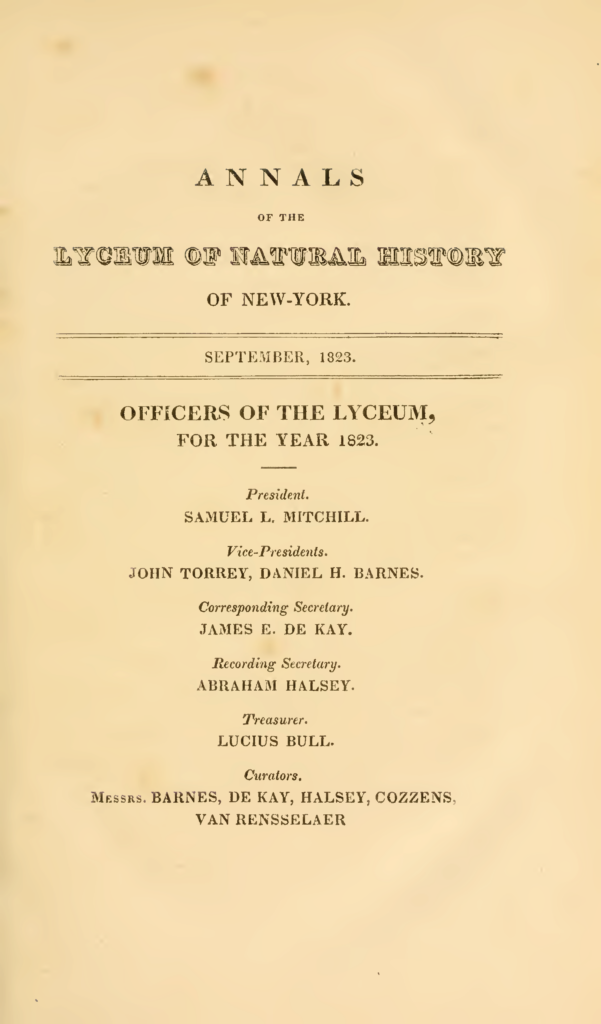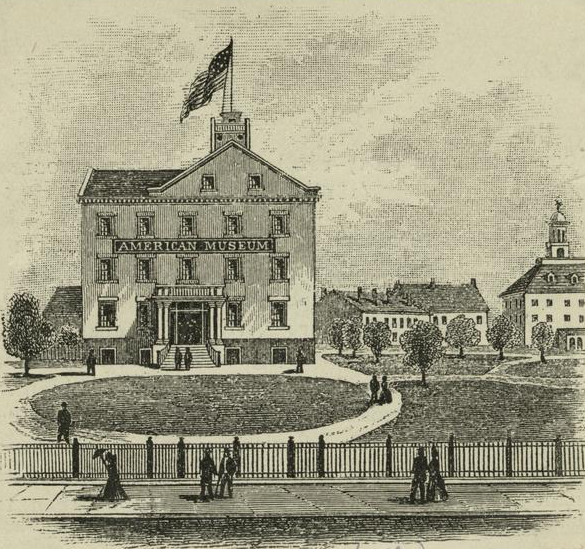Academy’s Past: A Budding Institution
The Lyceum’s second home housed “the richest collection of reptiles and fish in the country.”
Published August 6, 2024
By Nick Fetty
Digital Content Manager
The New York Institution | Chambers Street | April 1817 – 1831
The Lyceum of Natural History in the City of New York (“the Lyceum” – which would become The New York Academy of Sciences in 1876) moved into its second home off Chambers Street in April 1817, just four months after its inaugural meeting. The new building, known as the New York Institution, was located in City Hall Park, bounded by Chambers Street to the north, Park Row to the east, and Broadway to the west.
The New York Institution housed several of the city’s arts and sciences organizations, including the Academy of Arts, the Academy of Painting, the American Institute, the New-York Historical Society, the City Library, the American Museum, the Lyceum of Natural History as well as the Chambers Street Savings Bank and the Deaf and Dumb Institute.
Also known as the Second Almshouse, the long, narrow brick building had previously served as an early facility for what would become the Department of Social Services housing and feeding “the poor, destitute, criminal, elderly, infirm, sick and mentally ill men, women and children of the City.”
When the New York Institution moved into the space in 1817 it included room for the United States Military Philosophy Society, headed by Joseph G. Swift, a former superintendent of the United States Military Academy at West Point. Because of his institution’s near-defunct state, coupled with his personal interest in science, Swift offered part of his space in the building to the Lyceum.
Establishing Credibility

When the Lyceum moved in in April 1817, it served as a location for meetings and public lectures, and eventually for the Lyceum’s library and natural history museum. In 1826, the Lyceum owned “the richest collection of reptiles and fish in the country” with more than 500 specimens, in addition to some 3,000 mineral artifacts.
It was also during this era that the Lyceum commenced publication of what is now called Annals of the New York Academy of Sciences, which helped the young institution establish credibility “throughout the world of science.” The first issue was published in 1824 and included coverage of lectures and research from the previous year.
These first articles explored everything from a new species of fish discovered in the Hudson River to prehistoric sloth-like creatures that likely roamed the land now known as North America. Annals remains a highly cited scientific journal today, available in over 80 countries and is among the top multidisciplinary journals worldwide.
With its ever-expanding programs and initiatives, the Lyceum would continue to grow and would need to move into another new home in 1831.
This is the second piece in an eleven-part series exploring the Academy’s past homes. Read:

